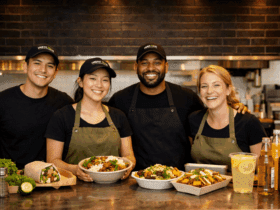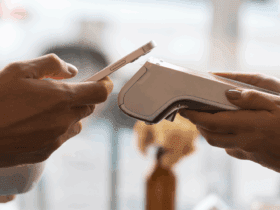How much should you charge for your food and drinks? We are certain this is a question that keeps cropping up ever so often. Knowing what figure to put against each menu item can be extremely challenging. Yet, it is crucial to get this right. While there are several ways you can get about deciding on menu prices, we have put together a list of five of the most useful menu pricing strategies for you to follow.
Five Pricing Strategies for a Lucrative Menu
01. Know Your Gross Margin Value

When you think of the cost of a dish, it is natural to restrict yourself to the total cost of the ingredients. However, a pricing strategy that is based solely on what you pay for the raw materials is dangerous as it completely overlooks all other expenses. Each month you incur several expenses that have nothing to do with food, for instance, salaries, rent and utilities. If you do not take these into consideration your restaurant is going to struggle to survive.
To keep your establishment in business, you must factor in the entirety of your expenditure, including food cost, labor cost, and running cost. Then, fix a suitable Gross Margin Value (GMV), which is the difference between the menu price and the food cost of a dish. This is calculated as:
GMV = (Total Revenue – Cost of Goods) / Revenue
While the average GMV is 65% you will need to tweak this based on your other costs, moving it up or down accordingly. Because of the type of service offered and operation costs involved, the GMV of fine dining restaurants is usually 75%, while the GMV of casual dining and quick service restaurants tend to be 55% and 45% respectively.
Must read: Circumventing the Effects of Inflation through Effective Menu Pricing
02. Employ Charm Pricing
Have you ever wondered why retailers tag an item at $29.99 and not $30? Because, somehow, deep in the psyche of customers, they see the former as much cheaper than the latter, making them more inclined to purchase. Referred to as charm pricing, this is a psychological pricing strategy that taps into customer perception. The one-cent less places the item in the lower band (under $30), indicating to the customer that it is not as expensive as $30.
Using this pricing strategy in your menu is sure to drive up sales. The more expensive dishes in particular will seem more affordable when it is marked a few cents less than the rounded-off price – so $19.99 is going to appear to be a better deal than $20, prompting your customers to spend.
03. Add A Premium For Gourmet Cuisine

The type of food you serve plays a very important role in determining price. If you specialize in gourmet cuisine or have some exotic dishes among your offerings, then you can always charge more – in fact, you should charge more for this type of food. Another psychological pricing strategy, this too has to do with customer perception. Diners expect to pay more for exotic food items. This is so ingrained in them that they tend to be skeptical about exotic dishes that are economical. So even though your food cost may not be that expensive, you should still put a higher price tag on these gourmet dishes.
04. Experiment With Menu Engineering
The way you design your menu plays a key role in determining what your customers order. Placement, wording and pictures are influential in nudging your customers towards specific offerings. There are two effective menu engineering strategies you can use:
- Relative pricing – This involves creating a contrast between prices. One of the most powerful ways to do this would be to place an expensive menu item next to a cheaper yet high-profit item. When customers note the difference, they will be inclined to opt for what they see as the more economical dish. This becomes more lucrative for you because of the greater profit margin.
- Descriptions, boxes and photos – You can guide customers towards certain menu offerings through descriptions, boxes and photos. Descriptions are always useful because they clarify what the dish is about and help manage customer expectations. Carefully crafted descriptions can also tantalize through the use of evocative words. Menu items placed in a box tend to outsell the items that are in a list. Pictures are, of course, the ultimate temptation and the offerings that are represented visually tend to be the biggest sellers. These design-based pricing strategies will help you rake in more revenue by guiding your customers to select something they would normally not have gone for.
Must read: 10 Tips to become a Successful Restaurant
05. Use Technology
Technology helps you to come to grips with the ground reality of your restaurant. POS systems carry a wealth of information on customer purchases By looking at sales patterns, you can get a clear and accurate idea of what customers buy and what is being overlooked. This data can inform your pricing strategy: you could drop the price of the less sought after dishes to increase sales or you could hike up the price of the fast selling items to bring in more money. You can also learn about the demand for costlier dishes and decide if you want to keep them or scrap them.
A profitable menu depends on sound pricing strategies. Think carefully before you make your final decision. And keep reviewing your menu prices often to make sure you remain competitive.










Leave a Reply